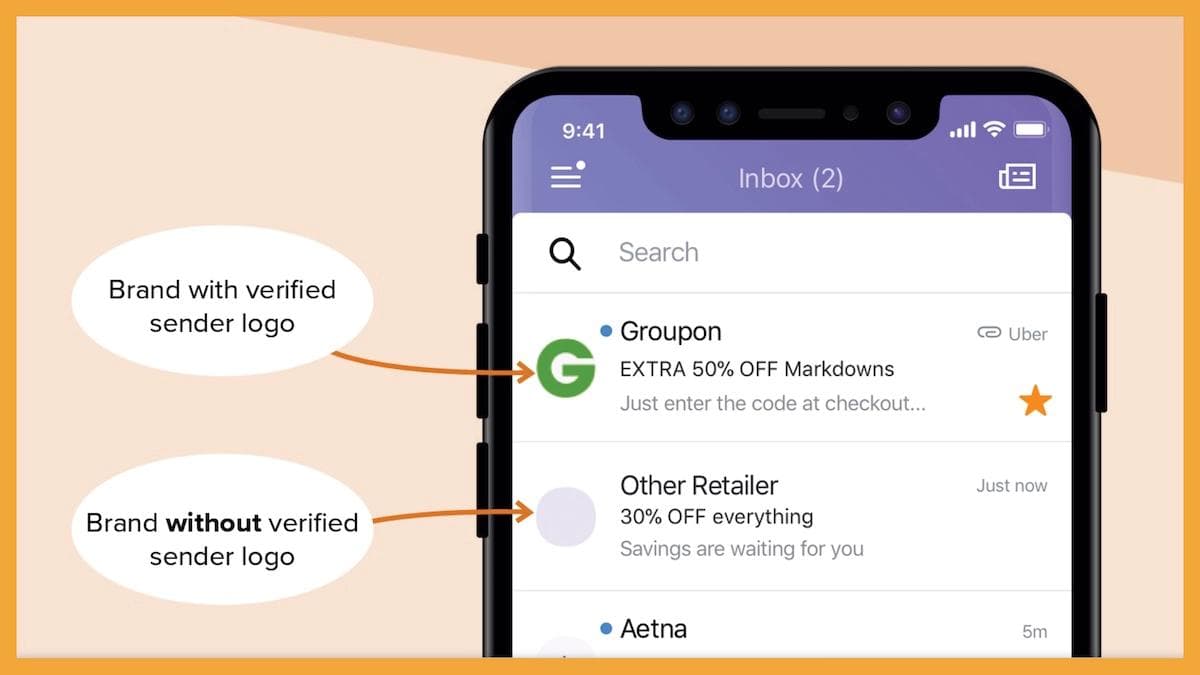


Just as email marketers are starting to get the hang of the Apple's iOS15 update that dared users to opt-out of Mail Privacy Protection (MPP), they announce iOS16, which creates another new challenge for marketers to respond to: Brand Indicators for Message Identification (BIMI).
On its face, BIMI is simply displaying a brands logo next to the 'from' line in the inbox. It presents as simple branding—but really, BIMI is an industry standard that ensures brands are verified. Where MPP was a privacy update, BIMI is more of a security update.
BIMI also incentivizes adoption of the Domain-Based Message Authentication, Reporting & Conformance (DMARC) protocol. This is an anti-spoofing protocol which allows senders to monitor mail sent using their domain, identify if that mail is passing or failing authentication and enables them to broadcast instructions to receiving networks on what to do if said mail fails. This standard is extremely appealing to inbox providers as they no longer have to guess what the domain owner wants in the event of failing authentication; DMARC gives the power to the domain owner to decide. BIMI empowers domain owners to monitor and declare their policy for their mail stream.
But to marketers, the branding value of a logo in the inbox is the endgame. BIMI allows companies to identify their preferred logo, which will be displayed within email apps that support BIMI. With Yahoo and Gmail already supporting, and Apple planning to go live sometime this fall, the majority of US consumers will be reading email on BIMI-supported platforms—the critical mass that proves that BIMI is here to stay.

In short, no. BIMI is not designed to fix deliverability problems, and most senders—especially those already using SPF and DKIM—should not expect any shift in inbox placement. That said, as the logo will help reinforce recognition for recipients, and as DMARC will help to thwart any spoofing against your domain, BIMI will be a net positive for reputation/deliverability.
This question is a ripe for debate. Some have suggested a 10% lift (e.g. a 20% open rate turns into a 22% open rate), while others have suggested much lower. But as we continue to see more inbox providers continue to display this on new platforms in placements, and considering that logo helps drive recognition and trust, we expect that the lift in opens will be more apparent as will the other non-open benefits.
Because implementing BIMI requires coordination across multiple internal teams (e.g., IT and legal) as well as outside vendors, it’s unlikely to be swift. Timing must also account for the number of brands/logos, the number of platforms used to deploy, and whether any changes need to be made across those platforms.
BIMI is neither quick nor cheap. At its root, certification costs about $2,000 per year for each logo and domain. As BIMI is more than a branding exercise, we are talking about certification because it’s a security protocol, brands will need to monitor reporting. DMARC reports are fairly complex and usually require an outside vendor to read out results. This can be a significant cost, well beyond the $2,000 per year per logo/domain starting point.
To learn more about BIMI, don't hesitate to contact us at insidesales@epsilon.com—we'd be happy to answer any of your BIMI questions.